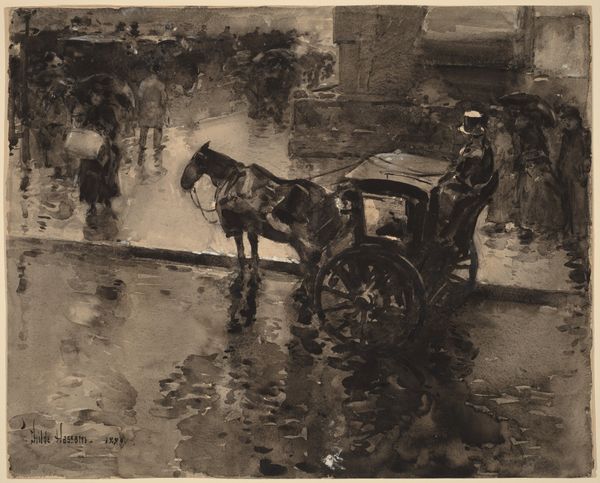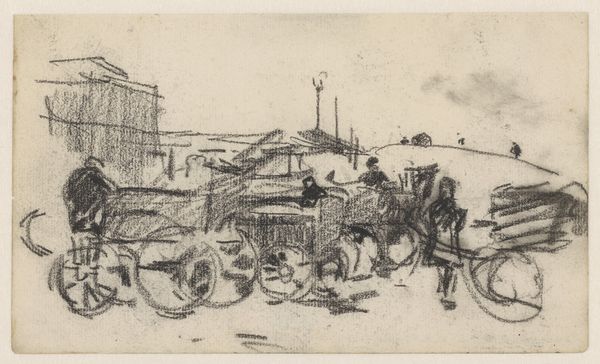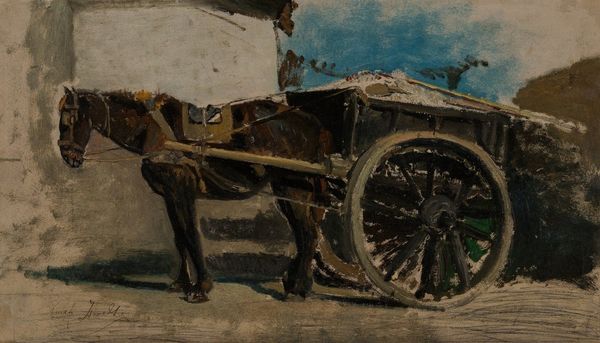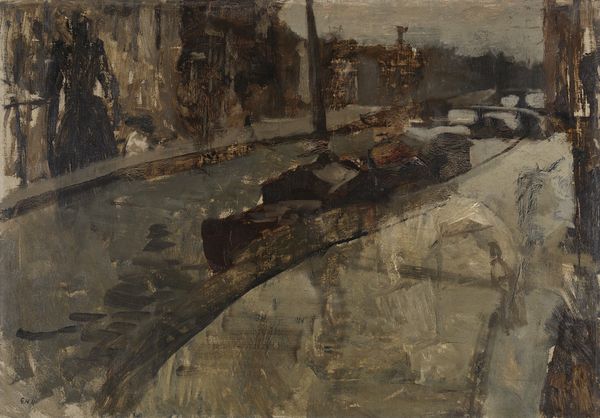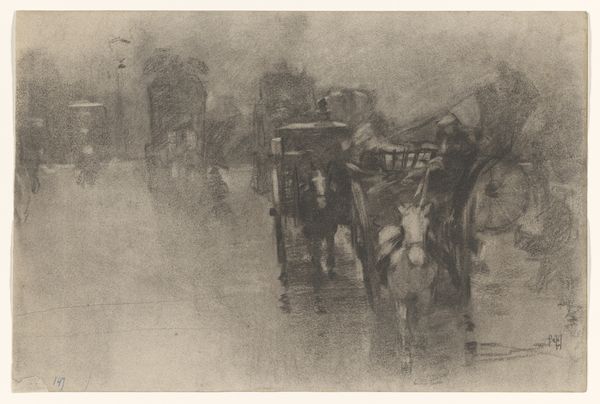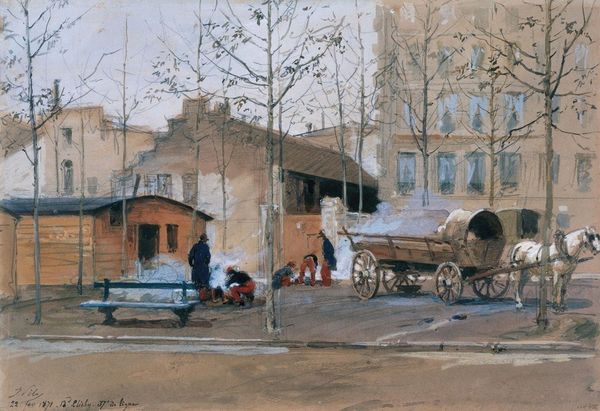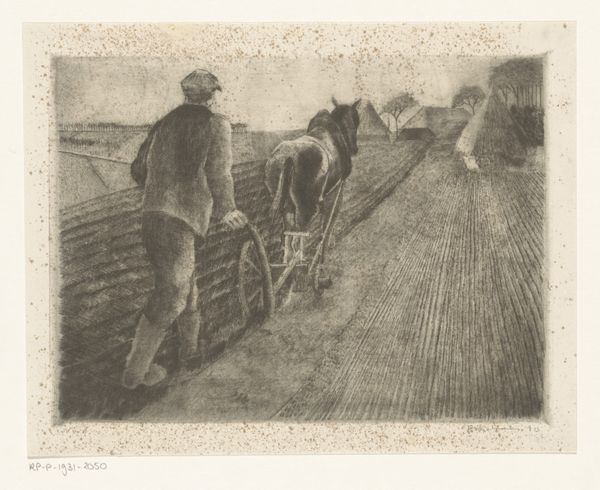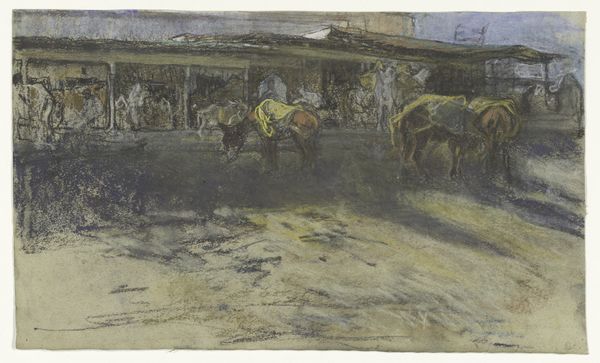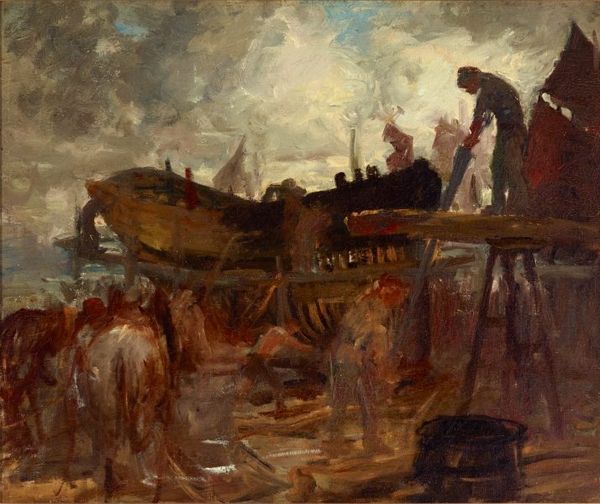
Labourers Pulling a Heavily Laden Cart on Jacob van Lennepkade, Amsterdam 1900
0:00
0:00
Dimensions: height 675 mm, width 934 mm
Copyright: Rijks Museum: Open Domain
Curator: Immediately, I am struck by the muted palette. A very subtle wash, dominated by greys, sepias, and whites. It feels incredibly somber. Editor: We're looking at "Labourers Pulling a Heavily Laden Cart on Jacob van Lennepkade, Amsterdam," created around 1900 by George Hendrik Breitner. It resides here in the Rijksmuseum, offering a slice of early 20th-century Amsterdam life. The artwork uses watercolors on paper. Curator: The symbol of labor looms large. Look at the workers, almost faceless, rendered primarily by their strenuous physical activity and how they bow beneath a heavy cart—itself weighed down with dark materials. This image becomes an allegory of working-class burdens. Editor: Absolutely. Breitner, embedded within realist and impressionist movements, often depicted the working class. You can almost feel the cart's weight through his masterful rendering of light and shadow. Social realities permeate this depiction. How do you see the city interacting with the working lives represented? Curator: The urban landscape forms a distant, indifferent backdrop to the laborers’ struggle. Note the building under construction, an optimistic signal of city development, contrasting the strenuous, traditional toil occurring in the foreground. The visual division implies progress borne on the backs of unseen effort. Editor: Precisely. Breitner understood the role of these scenes in the broader narrative of Amsterdam's rapid industrialization and societal evolution. These weren't just depictions, they were observations infused with meaning. Also note that Breitner lived on Jacob van Lennepkade at the time this was painted! Curator: It adds another layer, doesn't it? The act of witnessing transforming into representation. This artwork encapsulates human experience, memory, and social context, blending it into visual form. Editor: Indeed, it speaks volumes about the urban landscape, class disparities, and the human condition—timeless, yet fixed within a specific moment of Amsterdam’s history. Thanks for your thoughts! Curator: Likewise! Always enlightening.
Comments
No comments
Be the first to comment and join the conversation on the ultimate creative platform.

